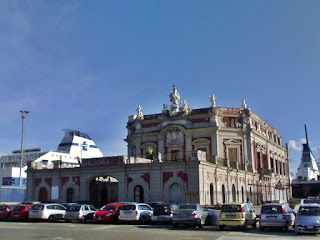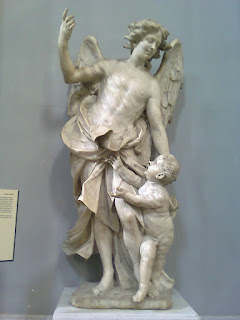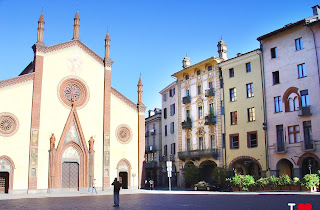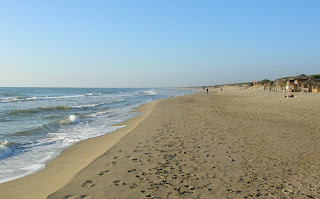One half of the Giro d’Italia’s most controversial duel
 |
Roberto Visentini had the reputation of a
playboy in a working-class sport |
Roberto Visentini, the Italian road racing cyclist who won the 1986 Giro d’Italia but the following year was a central figure in the most controversial race since the historic tour of Italy began, was born on this day in 1957 in Gardone Riviera.
The son of a wealthy undertaker from
Brescia, Visentini had been an Italian and a world champion at junior level in 1975 and won the Italian national time-trial championship in 1977 as an amateur, before turning professional in 1978. Despite his success, he was not universally respected by his peers, some of whom felt his penchant for fast cars and a playboy lifestyle were not in keeping with what was traditionally a working-class sport.
The
Giro was always his focus. Riding for the Inoxpran team, he was runner-up in the 1983 edition behind his fellow countryman
Giuseppe Saronni and looked set to win the event two years later, holding the race leader’s pink jersey for nine consecutive stages to the half-way point, only to become unwell, dropping back to finish 49th overall behind the Frenchman Bernard Hinault.
In 1986, now with the
Carrera team, Visentini finally claimed the prize as his own, taking the lead at stage 16 as he turned the tables on Saronni, with the 1984 winner Francesco Moser, another Italian, in third place.
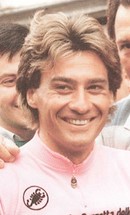 |
Visentini was the 1986
Giro d'Italia champion |
Come 1987, he felt he should begin the Giro, naturally, as team leader, and if he found himself positioned in the race well enough to have a chance of defending his title successfully, expected his teammates to do all they could to support him, as did the team management.
But one member of the team, the ambitious Irishman Stephen Roche, had other ideas. A high-profile signing in 1986, he had endured a wretched first year wrecked by a knee injury. He arrived at the Giro fresh from winning the Tour de Romandie in Switzerland and was in great form. He felt he also had a claim to be team leader.
Much to Visentini’s chagrin,
Davide Boifava, the Carrera team manager, was reluctant to name a team leader when the race began in San Remo, announcing that “the road would decide”.
In the event, Visentini won the prologue but Roche claimed the overall lead on the third stage, a time trial between
Lerici on the Ligurian coast and
Camaiore, just over the border in Tuscany, and defended it for the next nine stages until the race reached
Rimini, on the Adriatic coast.
Yet Visentini was never far behind and as the pair prepared for the uphill time trial from Rimini to
San Marino, Roche’s lead over the defending champion was just 25 seconds. What’s more, he was suffering some pain after a crash a couple of days earlier.
 |
Stephen Roche was an ambitious rider who failed to see
why he should not try to win the Giro in his own right |
Now Visentini made his move and beat Roche decisively in the 46km climb, finishing 2 min 47 sec ahead of his teammate, taking the pink jersey as race leader in the process. He reasoned that with that the road had ‘decided’ and that the Giro was as good as his.
However, Roche was having none of it. There had been an assumption among the journalists reporting the race and the fans watching that an agreement had been reached where Roche would support Visentini in the Giro and the Italian would return the favour in the Tour de France the following month.
But Roche says he saw Visentini give an interview on the night of the San Marino stage in which he said he was not planning to ride in the Tour, something the Italian later denied.
Either way, on stage 15, which took the riders through the Dolomites, Roche broke away from the Carrera group, forming a new leading group with two other riders on the descent of
Monte Rest. Despite Boifava sending his second-in-command to drive alongside Roche and tell him to abandon the move, he continued with the move, scrambling down the hill at speeds he admitted later were too fast.
The upshot was that though he did not win the stage his 12th place was enough for him to reclaim the pink jersey. Encouraged by his Italian supporters, some of whom spat at or attempted to strike Roche as he went past them, Visentini tried to fight back on stage 16, between
Sappada in the province of Belluno and
Canazei, in Trento, but could not pass Roche. He ultimately faded and abandoned his race after a crash on the penultimate lap.
By the end, despite the opprobrium of the Italian newspapers, many supporters were applauding the Irishman as the stronger rider. Indeed, he went on to win the Tour de France and the road race at the World Championships, the first rider to win all three in the same year.
The career of Visentini, by contrast, went the other way. He never won another significant race and retired in 1990 to take over the running of the family firm, and thereafter had little to do with the sport, pointedly staying away from Carrera team reunions.
 |
Sappada enjoys a picturesque setting in the foothills of
the Alps, developed largely by Germans |
Travel tip:
The small town of
Sappada, also known as
Bladen, is in an area of rich natural beauty in the Dolomites located at 1,245m (4,085ft) above sea level at the northeastern end of the range, on the border between Veneto, Friuli Venezia Giulia and Austria. A tourist destination in winter and summer, despite being only 130km (81 miles) north of Venice it is largely German-speaking, with a Bavarian dialect known as Sappadino in Italian or Plodarsich in the local vernacular.
 |
| Gardone Riviera is an elegant resort on Lake Garda |
Travel tip:
Gardone Riviera is a small resort about one third of the way along the western shore of Lake Garda, in the province of Brescia. Several hotels can be found along the waterfront, as well as a small piazza providing a peaceful lakeside setting to eat lunch or dinner or enjoy an ice cream at an outdoor table. The town was the home of the poet, soldier and revolutionary Gabriele D'Annunzio (1863-1938), who built the extravagant monument named
Il Vittoriale degli Italiani, an estate in the hills above Gardone Riviera, which he planned with the help of Giancarlo Maroni. It now houses a military museum and library.
More reading:
The launch of the Giro d'Italia
How Attilio Pavesi became Italy's first Olympic cycling champion on the road
The cycling champion who was a secret war hero
Also on this day:
1882: The death of unification hero Giuseppe Garibaldi
The Festa della Repubblica, commemorating Italy becoming a republic in 1946
Home


